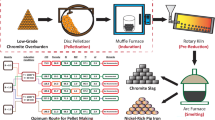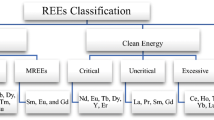Abstract
In this study, Monte Carlo (MC) simulations combined with energy dispersive X-ray fluorescence (EDXRF) spectroscopy have been used to characterize non-destructively a collection of Cu-based artifacts recovered from two archeological sites in southern Portugal: (a) the Chalcolithic E.T.A.R. site of Vila Nova de Mil Fontes and (b) the Middle Bronze Age site of Quinta do Estácio 6. The metal artifacts show a multilayered structure made up of three distinct layers: (a) brownish carbonate soil-derived crust, (b) green oxidized corrosion patina, and (c) bulk metal. In order to assess the reliability of the EDXRF-based Monte Carlo simulations to reproduce the composition of the alloy substrate in archeological bronze artifacts without the need to previously remove the superficial corrosion and soil derived patinas, EDXRF analysis together with scanning electron microscopy with energy dispersive X-ray spectroscopy (SEM-EDS) was also performed on cleaned and patina-/crust-coated areas of the artifacts. Characterization of the mineralogical composition of the corrosion products in the surface patinas was further determined by means of X-ray diffraction (XRD). Results suggest that the adopted EDXRF/Monte Carlo protocol may represent a safe and fast analytical approach in the quantitative characterization of the bulk chemical composition of Cu-based metal artifacts even in the presence of fairly thick corrosion patinas and/or soil-derived encrustations at the surface of the archeological objects.








Similar content being viewed by others
References
Bayona MR (2008) La Investigación de la Actividad Metalúrgica Durante el III Milenio A.N.E. en el Suroeste de la Península Ibérica, Archaeopress, Oxford
Benzaazoua M, Marion P, Pinto A, Migeon H, Wagner FE (2003) Tin and indium mineralogy within selected samples from the Neves Corvo ore deposit (Portugal): a multidisciplinary study. Miner Eng 16(11):1291–1302. doi:10.1016/j.mineng.2003.07.008
Bottaini C, Mirão J, Figuereido M, Candeias A, Brunetti A, Schiavon N (2015) Energy dispersive X-ray fluorescence spectroscopy/Monte Carlo simulation approach for the non-destructive analysis of corrosion patina-bearing alloys in archaeological bronzes: the case of the bowl from the Fareleira 3 site (Vidigueira, South Portugal). Spectrochim Acta, Part B 103-104:9–13. doi:10.1016/j.sab.2014.10.015
Bottaini C, Vilaça R, Schiavon N, Mirão J, Bordalo R, Paternoster G, Montero-Ruiz I (2016) New insights on Late Bronze Age Cu-metallurgy from Coles de Samuel hoard (Central Portugal): a combined multi-analytical approach. J Archaeol Sci Report 7:344–357. doi:10.1016/j.jasrep.2016.05.009
Bottaini C, Silva ALM, Covita DS, Moutinho LM, Veloso JFCA (2012) Energy dispersive X-ray fluorescence analysis of archeological metal artifacts from the final Bronze Age. X-Ray Spectrom 41(3):144–149. doi:10.1002/xrs.2368
Bray PJ, Pollard AM (2015) Form and flow: the ‘karmic cycle’ of copper. J Archaeol Sci 56:202–209. doi:10.1016/j.jas.2014.12.013
Brunetti A, Fabian J, Wester La Torre C, Schiavon N (2016) A combined XRF/Monte Carlo simulation study of multilayered Peruvian metal artifacts from the tomb of the priestess of Chornancap. Appl Phys A Mater Sci Process 122(6):571. doi:10.1007/s00339-016-0096-6
Brunetti A, Golosio B (2014) A new Monte Carlo code for simulation of the effect of irregular surfaces on X-ray spectra. Spectrochim Acta, Part B 94-95:58–62. doi:10.1016/j.sab.2014.03.007
Brunetti A, Golosio B, Schoonjans T, Oliva P (2015) Use of Monte Carlo simulations for cultural heritage X-ray fluorescence analysis. Spectrochim Acta B 108:15–20. doi:10.1016/j.sab.2015.03.014
Budd P (1990) Eneolithic arsenical copper: heat treatment and the metallographic interpretation of manufacturing processes. In: Pernicka E, Wagner GA (eds) Archaeometry ’90: International Symposium in Archaeometry. Birkhauser Verlag, Heidelberg, pp 35–44
Cardoso JL, Guerra F (1997/1998) Análises químicas não destrutivas do espólio metálico do povoado pré-histórico de Leceia, Oeiras e seu significado no quadro da intensificação económica Calcolítica da Estremadura portuguesa. Estudos Arqueológicos de Oeiras 7:61–87
Craddock PT (1995) Early metal mining and production. The University Press, Cambridge
Ferreira OV (1961) Acerca da presença de arsénio e instrumentos encontados em Portugal. Boletim de Minas 12:1–5
Ferreira OV (1970) in Actas do VI Congresso Internacional da Minería, 1:99–116
Figueiredo E, Araújo MF, Silva RJC, Senna-Martinez JC, Vaz JLI (2011) Characterisation of Late Bronze Age large size shield nails by EDXRF, micro-EDXRF and X-ray digital radiography. Appl Radiat Isot 69:1205–1211. doi:10.1016/j.apradiso.2011.04.027
Giumlia-Mair A, Keall EJ, Shugar AN, Stock S (2002) Investigation of a copper-based hoard from the megalithic site of al-Midamman, Yemen: an interdisciplinary approach. J Archaeol Sci 29(2):195–209. doi:10.1006/jasc.2001.0686
Gonçalves VS, Gil FB, Seruya AI (1989) In: Gonçalves VS (ed), Megalitismo e Metalurgia no Alto Algarve Oriental. Uma aproximação integrada. UNIARQ, Lisboa
Hanning E, Gauß R, Goldenberg G (2010) Metal for Zambujal: experimentally reconstructing a 5000-year-old technology. Trab Prehist 67(2):287–304. doi:10.3989/tp.2010.10040
Hauptmann A (2007) The archaeometallurgy of copper: evidence from Faynan, Jordan. Springer-Verlag, Berlin Heidelberg
Hunt-Ortiz MA (2003) Prehistoric mining and metallurgy in south west Iberian Peninsula. BAR International Series 1188, Archaeopress, Oxford
Jung M (2003) Material properties of copper alloys containing arsenic, antimony, and bismuth. The material of Early Bronze Age ingot torques. University of Freiberg, Dissertation
Junghans S, Sangmeister E, Schröder M (1968) Kupfer und Bronze in der frühen Metallzeit Europas, Studien zu den Anfängen der Metallurgie 2 (1–3). Gebrüder Mann Verlag, Berlin
Lechtman H (1996) Arsenic bronze: dirty copper or chosen alloy? A view from the Americas. J Field Archaeol 23:477–514. doi:10.2307/530550
Lechtman H, Klein S (1999) The production of copper-arsenic alloys (arsenic bronze) by co-smelting: modern experiment, ancient practice. J Archaeol Sci 26:497–526
Manso M, Schiavon N, Queralt I, Arruda AM, Sampaio JM, Brunetti A (2015) Alloy characterization of a 7th century BC archeological bronze vase—overcoming patina constraints using Monte Carlo simulations. Spectrochim Acta, Part B 107:93–96
McKerrell H, Tylecote RF (1972) The working of copper-arsenic alloys in the Early Bronze Age and the effect on the determination of provenance. Proceedings of the Prehistoric Society 38:209–218
Montero-Ruiz I (1991) Estudio Arqueometalurgico en el Sudeste de la Peninsula Ibérica. Instituto de Estudios Almerienses, Almeria
Müller R, Cardoso JL (2008a) The origin and use of copper at the Chalcolithic fortification of Leceia (Oeiras, Portugal). Madrider Mitteilungen 49:64–93
Müller R, Soares AMM (2008b) Traces of early copper production at the Chalcolithic fortification of Vila Nova de São Pedro (Azambuja, Portugal). Madrider Mitteilungen 49:94–114
Müller R, Goldenberg G, Bartelheim M, Kunst M, Pernicka E (2007) in Niece S, Hook D., Craddock PT (eds) Metals and mines. Studies in Archaeometallurgy, archetype, London, pp. 15–26
Northover JP (1989) Properties and use of arsenic-copper alloys. In: Hauptmann A, Pernicka E, Wagner GA (eds) Old World archaeometallurgy, Der Anschnitt, Beiheft, vol 7. Deutsches Bergbaumuseum, Bochum, pp 111–118
Oliveira DPS, Rosa DRN, Matos JX, Guimarães F, Figueiredo MO, Silva TP (2009) in Williams PJ (ed) Smart science for exploration and mining, James Cook University, Townsville, 1: 424–426
Orestes Vidigal R, Valério P, Araújo MF, Soares AMM, Mataloto R (2015) Micro-EDXRF study of Chalcolithic copper-based artefacts from southern Portugal. X-Ray Spectrom 45(1):63–68. doi:10.1002/xrs.2658
Pereira F, Silva RJC, Soares AMM, Araújo MF (2013) The role of arsenic in Chalcolithic copper artefacts—insights from Vila Nova de São Pedro (Portugal). J Archaeol Sci 40(4):2045–2056. doi:10.1016/j.jas.2012.12.015
Pollard AM, Thomas RG, Ware DP, Williams PA (1991) Experimental smelting of secondary copper minerals: implications for Early Bronze Age metallurgy in Britain. In: Pernicka E, Wagner GA (eds) Archaeometry ‘90: International Symposium in Archaeometry. Birkhauser Verlag, Heidelberg, pp 127–136
Robbiola L, Portier R (2006) A global approach to the authentication of ancient bronzes based on the characterization of the alloy–patina–environment system. J Cult Herit 7:1–12. doi:10.1016/j.culher.2005.11.001
Rovira S (2004) Tecnología metalúrgica y cambio cultural en la prehistoria de la Península Ibérica. Norba 17:9–40
Rovira S, Montero-Ruiz I (2003) In Giumlia-Mair a, lo Schiavo F (ed) Le problème de l’étain à l’origine de la métalurgie—the problem of early tin. BAR International series 1199, Oxford
Ruíz Taboada A, Montero-Ruiz I (1999) The oldest metallurgy in western Europe. Antiquity 73(282):897–903. doi:10.1017/S0003598X00065650
Schiavon N, Celauro A, Manso M, Brunetti A, Susanna F (2013) Iron-Age bronze statuettes in southern Portugal: combining archaeological data with EDXRF and BSEM + EDS to assess provenance and production technology. Appl Phys A Mater Sci Process 113(4):865–875. doi:10.1007/s00339-013-7747-7
Sabatini BJ (2015) The As-Cu-Ni system: a chemical thermodynamic model for ancient recycling. JOM 67:2984–2992. doi:10.1007/s11837-015-1593-3
Schiavon N, De Palmas A, Bulla C, Piga G, Brunetti A (2016) An energy-dispersive X-ray fluorescence spectrometry and Monte Carlo simulation study of Iron-Age Nuragic small bronzes (“Navicelle”) from Sardinia, Italy. Spectrochim Acta, Part B 123:42–46. doi:10.1016/j.sab.2016.07.011
Silva C, Soares J (1997) Economias costeiras na Pré-história do Sudoeste Português. O concheiro de Montes de Baixo. Setúbal Arqueológica 11-12:69–108
Soares AMM, Araújo MF, Alves L, Ferraz MT (1996) In Maciel MJ (Ed) Miscellanea em Homenagem ao Professor Bairrão Oleiro, Ed. Colibri, Lisboa, pp. 553–579
Subramanian PR, Laughlin DE (1998) The As−Cu (arsenic-copper) system. Bull Alloy Phase Diagrams 9:605–617
Tylecote RF (1976) A history of metallurgy. Metals Society, London
Tylecote RF, Ghaznavi HA, Boydell PJ (1977) Partitioning of trace elements between the ores, fluxes, slags and metal during the smelting of copper. J Archaeol Sci 4:305–333. doi:10.1016/0305-4403(77)90027-9
Valera AC, Parreira J (2014) In VIII Encontro de Arqueologia do Sudoeste Peninsular 2014, pp. 745–760
Valério P, Soares AMM, Araújo MF, Silva CT, Soares J (2007) Vestígios arqueometalúrgicos do povoado calcolítico fortificado do Porto das Carretas (Mourão). O Arqueólogo Português s IV(25):177–194
Valério P, Soares AMM, Araújo MF, Silva RJC, Porfírio E, Serra M (2014) Arsenical copper and bronze in Middle Bronze Age burial sites of southern Portugal: the first bronzes in Southwestern Iberia. J Archaeol Sci 42:68–80. doi:10.1016/j.jas.2013.10.039
Acknowledgements
This work has been financed by national funds by FCT–Foundation for Science and Technology under the UID project UID/HIS/00057/2013 (POCI-01-0145-FEDER-007702) and UID/Multi/04449/2013 (POCI-01-0145-FEDER-007649), COMPETE, FEDER, Portugal2020. The first author also thanks the FCT for the SFRH/BPD/111039/2015 grant and Robert Allen Zimmerman for support in writing the paper.
Author information
Authors and Affiliations
Corresponding author
Rights and permissions
About this article
Cite this article
Bottaini, C., Brunetti, A., Bordalo, R. et al. Non-destructive characterization of archeological Cu-based artifacts from the early metallurgy of southern Portugal. Archaeol Anthropol Sci 10, 1903–1912 (2018). https://doi.org/10.1007/s12520-017-0501-x
Received:
Accepted:
Published:
Issue Date:
DOI: https://doi.org/10.1007/s12520-017-0501-x




